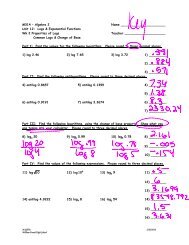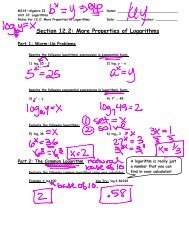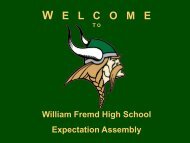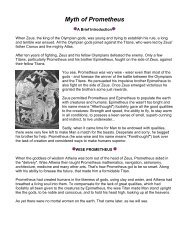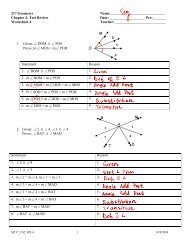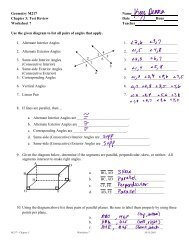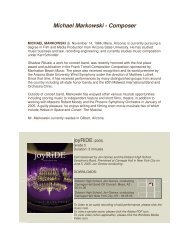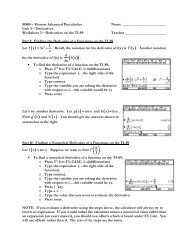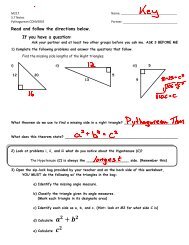Heros in the Civil Rights - William Fremd High School
Heros in the Civil Rights - William Fremd High School
Heros in the Civil Rights - William Fremd High School
You also want an ePaper? Increase the reach of your titles
YUMPU automatically turns print PDFs into web optimized ePapers that Google loves.
Information on Thurgood Marshall<br />
Student Handout •<br />
Thurgood Marshall (far left <strong>in</strong> <strong>the</strong> picture)<br />
was a civil rights lawyer and U.S.<br />
Supreme Court justice who worked for<br />
civil rights from <strong>the</strong> 1930s until his<br />
retirement <strong>in</strong> 1991. Marshall was born <strong>in</strong><br />
1908 and was raised by two work<strong>in</strong>g<br />
parents <strong>in</strong> Baltimore, Maryland, and<br />
Harlem, New York, <strong>in</strong> a strongly<br />
segregated (racially separate)<br />
environment. From <strong>the</strong> time he was<br />
young, Marshall was encouraged by his<br />
fa<strong>the</strong>r to use <strong>the</strong> law to achieve justice for<br />
African Americans. <strong>William</strong> Marshall<br />
took Thurgood and his bro<strong>the</strong>r to hear<br />
court cases so that <strong>the</strong>y could learn <strong>the</strong> skills of legal argument. As a young student,<br />
Thurgood was assigned to read <strong>the</strong> Constitution as punishment for classroom mischief;<br />
however, he memorized it <strong>in</strong>stead. Marshall attended all-black L<strong>in</strong>coln University <strong>in</strong> Chester,<br />
Pennsylvania, and <strong>the</strong>n went on to get his law degree at Howard University <strong>in</strong> Wash<strong>in</strong>gton<br />
DC. He became so skilled <strong>in</strong> discuss<strong>in</strong>g <strong>the</strong> law that his university debate team called him<br />
"Wrathful Marshall."<br />
• Where did Marshall grow up?<br />
• What profession did he tra<strong>in</strong> for?<br />
In <strong>the</strong> 1930s, Marshall jo<strong>in</strong>ed <strong>the</strong> National Association for <strong>the</strong> Advancement of Colored<br />
People (NAACP), an organization that promoted African-American civil rights. Dur<strong>in</strong>g his<br />
tenure with <strong>the</strong> organization, Marshall fought many court cases for clients too poor to pay<br />
him. Without regard for money, he battled tirelessly to place blacks on juries, ga<strong>in</strong> equal pay<br />
for African-American teachers, and enlist black pilots for World War II. From <strong>the</strong> 1940s to<br />
<strong>the</strong> 1960s, Marshall played a critical role <strong>in</strong> w<strong>in</strong>n<strong>in</strong>g almost every major civil rights case.<br />
One of <strong>the</strong> most important cases he contributed to was <strong>the</strong> landmark 1954 Brown v. Board<br />
of Education case, <strong>in</strong> which <strong>the</strong> Supreme Court ruled that school segregation was<br />
unconstitutional. With his flawless logic, dignified aura, and straightforward speech,<br />
Marshall won 29 of <strong>the</strong> 32 cases he argued before <strong>the</strong> Supreme Court. President Lyndon B.<br />
Johnson appo<strong>in</strong>ted him as one of n<strong>in</strong>e Supreme Court justices <strong>in</strong> 1967, bestow<strong>in</strong>g on him <strong>the</strong><br />
highest honor for a lawyer <strong>in</strong> <strong>the</strong> country.<br />
© Teachers' Curriculum Institute USH-12-5, Activity 2.3, Page 19



